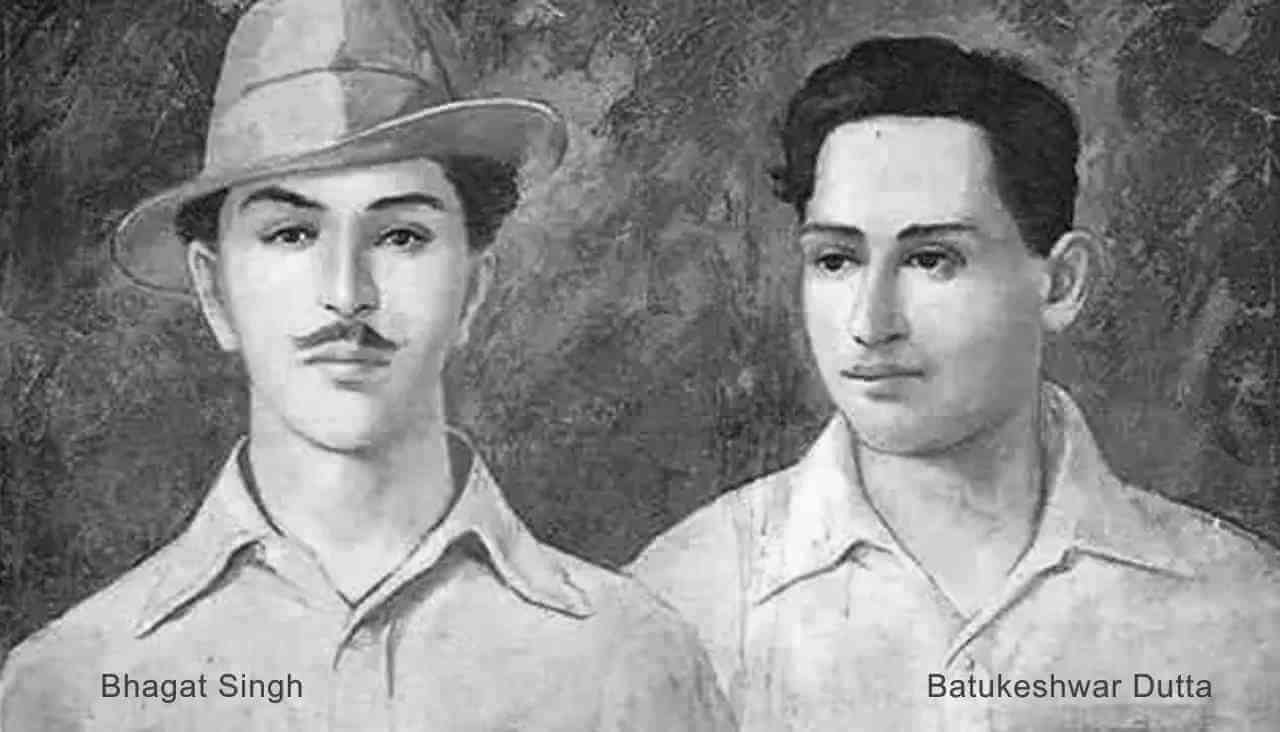Bhagat Singh and Batukeshwar Dutt Bomb the Central Legislative Assembly: A Bold Protest for Independence
History Indian HistoryPosted by NewAdmin on 2025-02-06 09:07:30 |
Share: Facebook | Twitter | Whatsapp | Linkedin Visits: 12

On April 8, 1929, Bhagat Singh and Batukeshwar Dutt carried out a dramatic act of protest by bombing the Central Legislative Assembly in Delhi. This was not an attempt to cause harm but a symbolic gesture to make the voices of revolutionaries heard. The event was a significant moment in India's struggle for independence, showcasing the defiance and determination of young revolutionaries against British rule.
The bombing was planned as a response to the passage of the Public Safety Bill and the Trade Disputes Bill, which were seen as oppressive measures to curb civil liberties and suppress workers' rights. Bhagat Singh and Batukeshwar Dutt, both members of the Hindustan Socialist Republican Association (HSRA), decided to throw bombs in the assembly to protest against these laws and to draw attention to the revolutionary cause.
As the bills were being discussed in the assembly, the two revolutionaries threw bombs from the visitor's gallery. The bombs were carefully designed to be non-lethal, ensuring that they created a loud explosion but did not cause deaths. Following the explosion, leaflets were thrown, containing slogans and messages explaining their cause. The leaflets bore the famous slogan "Inquilab Zindabad" (Long Live the Revolution), which later became a rallying cry for the freedom movement.
After the bombing, Bhagat Singh and Batukeshwar Dutt did not attempt to escape. Instead, they stood their ground, allowing themselves to be arrested so they could use the courtroom as a platform to spread their revolutionary ideas. During the trial, Bhagat Singh used his statements to highlight the injustices of British rule and the need for complete independence. His eloquence and fearless attitude inspired many young Indians to join the freedom struggle.
The incident led to a trial in which both revolutionaries were sentenced to life imprisonment for their actions. However, Bhagat Singh was later implicated in the murder of J.P. Saunders, a British police officer, and was sentenced to death along with his comrades Rajguru and Sukhdev. The bombing of the Central Legislative Assembly remains a powerful symbol of resistance in India's history. It demonstrated the shift from moderate protests to more radical means of opposing colonial rule and left an enduring legacy in the struggle for independence.
Search
Categories
- Sports
- Business
- History
- Politics
- International
- Science & Technology
- Social Issues
- Disaster Management
- Current Affairs
- Education
- Startup Business
- Startup News
- Awards
- Community Services
- Fundraising Events
- Volunteer Services
- Health Initiatives
- Innovations and Initiatives
- In News
- dummybanners
- Awards
- Partners
- Products
- Press Releases
- News
- Fast Check
- South
- సినిమా
- Gallery
- Sunday Chronicle
- Hyderabad Chronicle
- లైఫ్ స్టైల్
- National
- క్రైం
- ట్రెండింగ్
- జాబ్స్
- అంతర్జాతీయo
- బిజినెస్
- రాజకీయం
- బిజినెస్
- సంపాదకీయం
- నవ్య
- చిత్ర జ్యోతి
- క్రీడలు
- జాతీయం
- తెలంగాణ
- తాజా వార్తలు
- మన పార్టీ
- మన నాయకత్వం
- మన విజయాలు
- డౌన్లోడ్స్
- మీడియా వనరులు
- కార్యకర్తలు
- North East Skill Center News
- Government Schemes
- Entrepreneurship Support
- Employment Opportunities
- Skill Training Programs
- Departments
- Investments
- Initiatives
- Resources
- Telangana IT Parks
- Events & Jobs
- Press Releases
- News
- Airport News
- Newtons Laws of Motion
- Karbonn in Business
- Investments in Karbonn
- Company quarterly sales
- Markets
- Auto News
- Industry
- Money
- Advertisements
- Stock target
- Company Updates
- Stock Market
- Company Sales
- Staffing and HR
- Constituency Assembly
- General News
- Srikalahasti Temple
- Bojjala Sudhir Reddy
- Technology & Innovation
- Sports
- Business
- Products
- Industries
- Services & Trainings
- Tools & Resources
- Technology Integration
- Drug Seizures & Arrests
- Telangana Narcotics
- Law & Enforcement
- Rehabilitation
- Nationwide Drug Policing
- Nigeria Seizures
- Global Operations
- Drug Awareness
- Drug Enforcement Tech
- NCB Drug Seizures
- Judicial Crackdown
- India's Surveillance Tools
- Cross-Border Links
- Women Safety
- Cyber Crimes
- Drug Abuse
- Traffic & Road Safety
- Community Connect
- Public Safety Alerts
- Citizen Assistance
- Nellore City News
- Politics & Administration
- Events & Festivals
- Agriculture & Rural
- Business & Economy
- Health & Wellness
Recent News
- India's Need for a National Space Law: The Requirements and the Delay
- Seville Beats Lyles, Olympic Champion, in Sprint Final
- RSS Economic Wings Prioritize Sustainability, Self-Reliance For 'New India'
- The Future of Smartwatches
- BSNL's eSIMS Now Available In Select Areas- Here's How You Can Get It
- Lionel Messi Unavailable for Upcoming Match in Quarterfinal Stage of Leagues Cup
- National parliamentary panel calls for expedited HPV vaccine rollout, enhanced cancer control efforts
- Violence Against 'Facebook Friends' in Madhya Pradesh